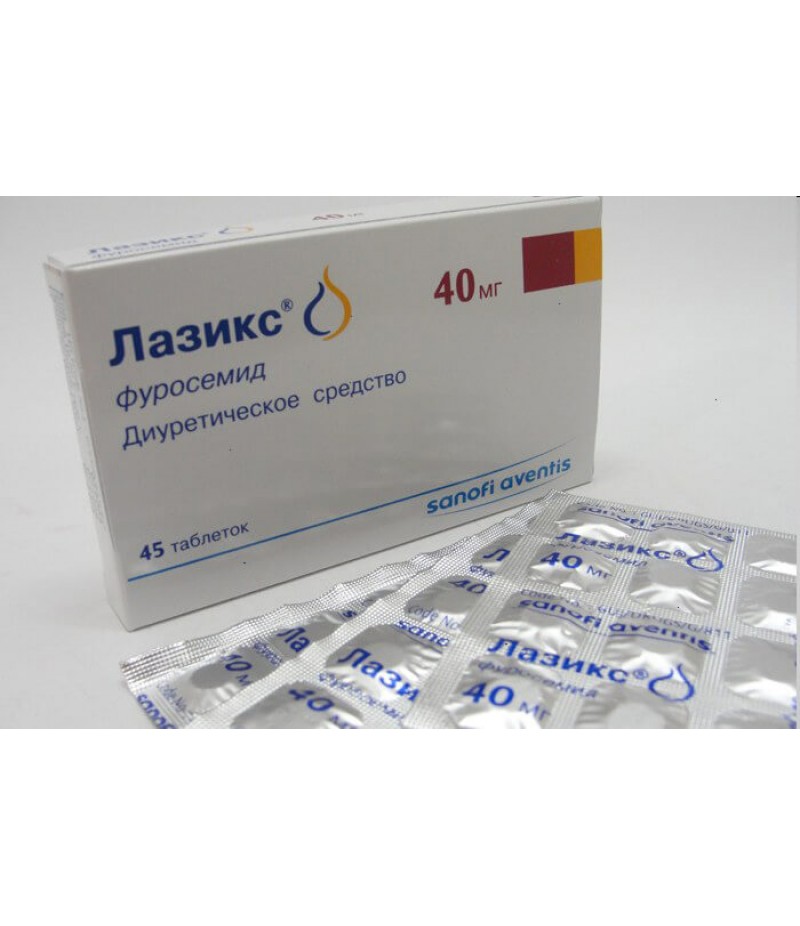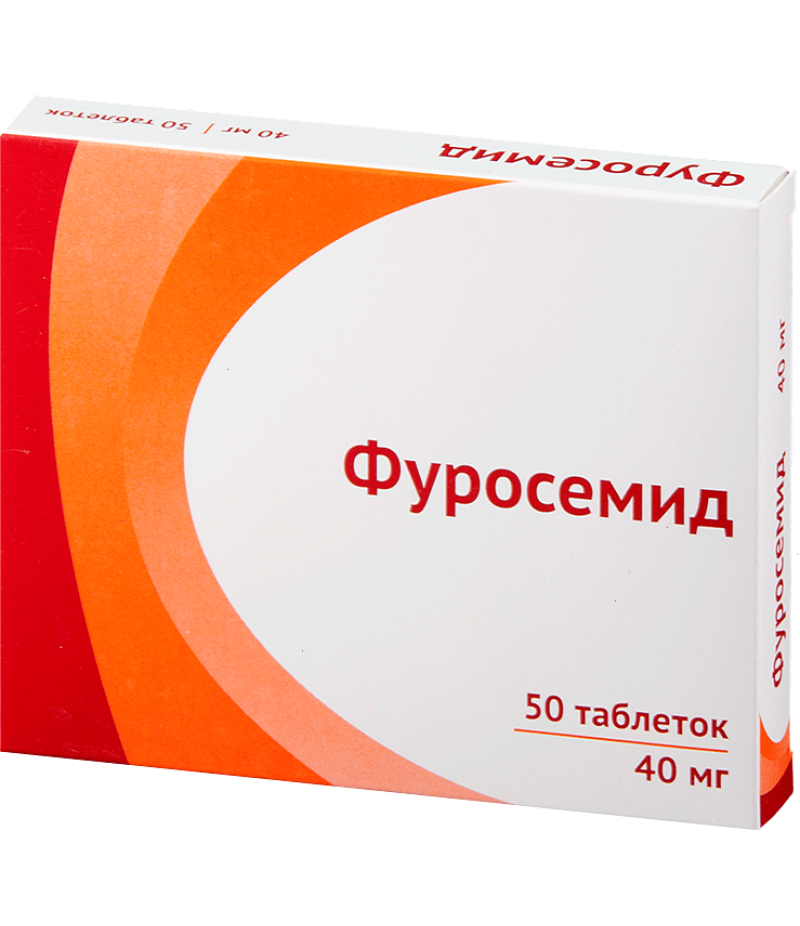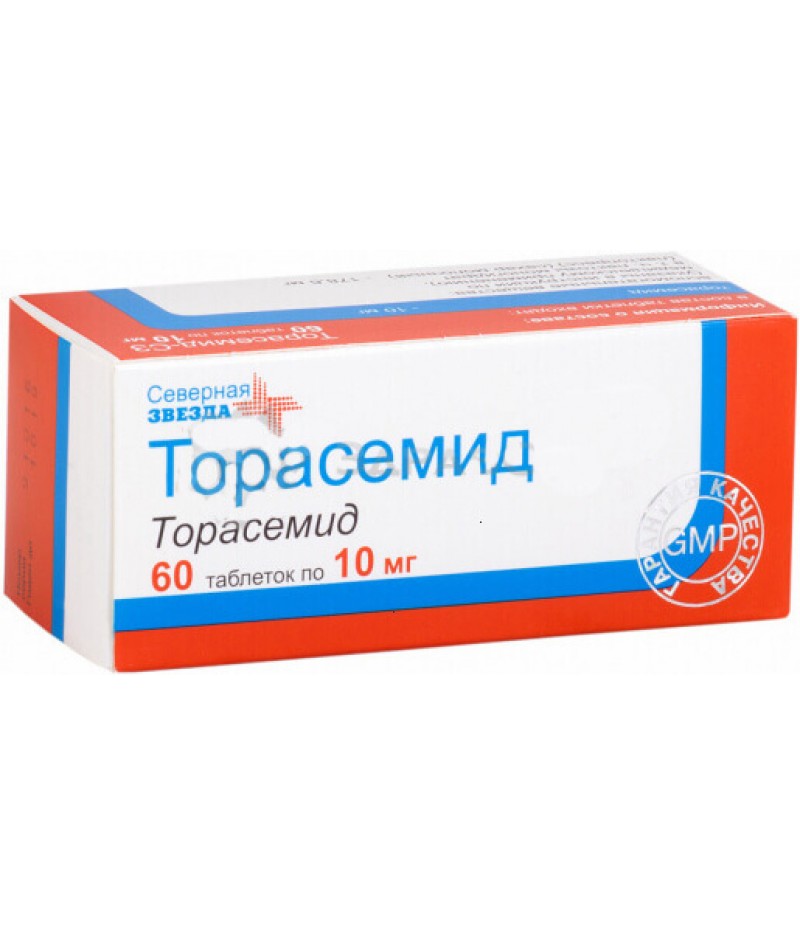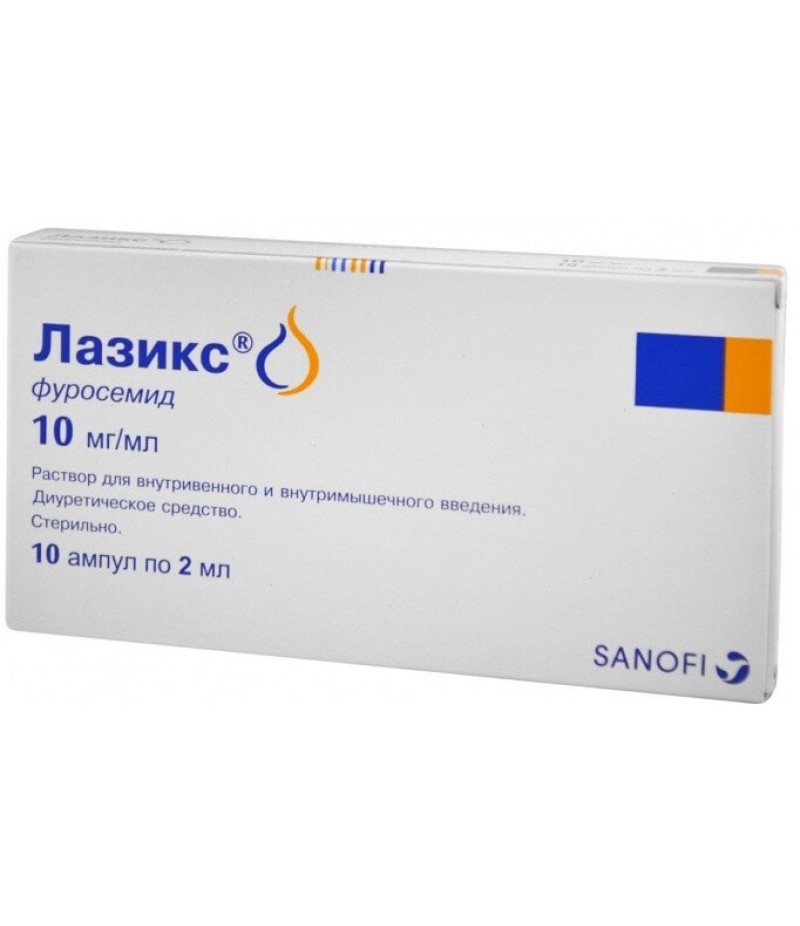Lasix tabs 40mg #45
- $3.50
- 3 or more $3.39
- Availability:Out Of Stock
Instruction for LasixReed more and buy Lasix tabs on this pageCompositionThe tablet contains 40 mg of furosemide and additional components: a colloidal form of silica, talc, lactose, Mg stearate, pregelatinized starch.In 1 ml of t..
Tags: tabs
Instruction for Lasix
Reed more and buy Lasix tabs on this page
Composition
The tablet contains 40 mg of furosemide and additional components: a colloidal form of silica, talc, lactose, Mg stearate, pregelatinized starch.
In 1 ml of the solution contains 10 mg of furosemide (in an ampoule of 20 mg) and additional components: Na hydroxide, Na NaCl and water.
Form of issue
Lasix is available in tablet form and as a solution.
The tablets are round in shape, white in color and special engraving "DLI" above the risk on both sides. Tablets are packed in aluminum strips of 10 or 15 pieces each. In a pack of cardboard is 5 (10 pieces) or 3 (15 pieces) strips.
Lasix in ampoules of 2 ml is a clear solution. In a pack of cardboard there are 10 ampoules.
pharmachologic effect
High-speed diuretic. The active ingredient is a sulfonamide derivative. The principle of action is based on the ability of furosemide to block the transport system of potassium, sodium and chlorine ions in the thick segment in the ascending section of the Henle loop knee. The severity of the saluretic effect depends directly on the entry of the active substance into the renal tubules (anion transport). Diuretic effect is achieved by inhibiting the process of NaCl reabsorption in the Henle loop.
Secondary effects of the drug:
increase in potassium production in the distal kidney tubule;
increased volume of excreted urine (due to osmotically bound water);
an increase in the removal of Mg, Ca ions.
Repeated use of the drug does not lead to a decrease in the severity of its effect. furosemide is able to interrupt the inverse tubular-glomerular connection in the tubular structure, which is tightly connected with the juxtaglomerular apparatus (Macula densa). The drug is characterized by a dose-dependent stimulation of the renin-angiotensin-aldosterone system.
In patients with heart failure, furosemide is able to rapidly reduce the filling pressure in the left ventricle and pulmonary artery, reduce preload, which is achieved by expanding the venous lumen. Such a rapidly developing effect is mediated by the action of prostaglandins, so its severity depends on the preservation of the functional state of the renal system and the synthesis of prostaglandins.
The hypotensive effect is caused by a decrease in the volume of circulating blood, an increase in the excretion of Na, a decrease in the response of the smooth muscle tissue of the vessels to vasoconstrictive effects. The natriuretic effect makes it possible to reduce the reaction of the vessel walls to catecholamines, whose level in hypertensive patients is increased.
Dose-dependent natriuresis and diuresis are recorded when taking the medication at a dose of 10-100 mg. The diuretic effect develops only 50 minutes after intravenous administration of 20 mg furosemide and can persist for up to 3 hours. The ratio of the intracanular concentration of free (unbound) furosemide and the severity of the natriuretic effect is expressed by a sigmoid curve with a minimum effective release rate of about 10 μg / min. That is why prolonged infusion administration of a drug is considered more effective than a bolus repetitive infusion. A significant increase in the effect is not observed when the bolus dosage is increased. The effect of the active substance is reduced when binding Lasix with albumin in the lumen of the tubules (with nephrotic syndrome) and with a decrease in the rate of tubular secretion.
Pharmacodynamics and pharmacokinetics
The distribution index of furosemide is 0.1-0.2 l / kg of weight and may vary depending on the concomitant pathology and underlying disease. The active substance binds strongly enough to plasma proteins (the index reaches 98%), mainly with albumins. The active component is excreted through the renal system (proximal tubules) mainly in unmodified form. With an intravenous infusion, 60-70% of Lasix is excreted through the kidneys. Glucuronated metabolites account for about 10-20% (the route of excretion is through the renal system). The remaining metabolites are excreted by biliary secretion through the intestine. After intravenous infusion, the final half-life is 1-1.5 hours.
The active ingredient is able to penetrate into breast milk and pass through the placental barrier. The concentration of the active substance in the blood of the newborn baby (fetus) is the same as that of the mother.
Pharmacokinetics of certain groups of patients
In patients with a deficiency of the renal system, the excretion of the active substance slows down, the half-life period increases (up to 24 hours with severe pathology).
In patients with nephrotic syndrome, a decrease in the plasma protein concentration leads to an increase in the level of unbound furosemide (free fraction), which can lead to ototoxic manifestations. In this group of patients, the diuretic effect may be poorly expressed due to the ability of the active substance to bind to the albumins that are in the tubules.
With constant outpatient peritoneal dialysis, hemodialysis, the active substance is excreted in a small amount.
If the hepatic system is inadequate, the half-life exponent increases by 30-90% due to an increase in the volume of distribution. In this group of patients, pharmacokinetic parameters vary quite strongly.
The delay in excretion of the active substance (due to impairment of the functional state of the kidneys) is recorded in severe arterial hypertension, heart failure and in the elderly.
In preterm infants, the process of excretion of the active substance can slow down (the rate of excretion depends on the maturity of the renal system). A similar effect is observed in infants, because glucurinating function of the kidneys is poorly developed.
Indications for use of Lasix
The medication is used mainly with edematous syndrome.
From what tablets, solution and the main indications for the use of Lasix:
edema of the brain;
edematous syndrome in chronic pathology of the renal system;
edematous syndrome with heart failure (acute form);
edematous syndrome in chronic heart failure;
hypertensive crisis;
edematous syndrome in the pathology of the hepatic system (in combination with aldosterone antagonists);
acute failure of the renal system for burns (maintenance of fluid excretion), during pregnancy;
edematous syndrome with nephrotic syndrome (in conjunction with the therapy of the underlying disease);
support of forced diuresis with intoxication by chemical compound, which is output through the renal system in an unchanged form.
Contraindications
severe hyponatremia;
hepatic precoma, coma;
failure of the renal system in anuria, which does not respond to the introduction of Lasix;
pronounced hypokalemia;
allergic responses;
breast-feeding;
a pronounced violation of the urine flow in any pathology (including unilateral lesion of the urinary tract);
pregnancy.
Relative contraindications:
gout;
arterial hypotension;
myocardial infarction, acute stage (increased risk of cardiogenic shock);
stenosing lesions of the cerebral, coronary arteries and other conditions in which excessive lowered blood pressure is extremely dangerous;
hepatorenal syndrome;
diabetes mellitus (latent, manifested);
hearing loss;
hypoproteinemia;
diarrheal syndrome;
pancreatitis;
violation of urinary outflow (hydronephrosis, narrowing of the urethra, prostatic hyperplasia);
systemic lupus erythematosus;
ventricular arrhythmia.
The drug is not prescribed for premature infants because of the risk of deposition of Ca salts in the renal parenchyma (nephrocalcinosis), due to the possibility of formation of calcium-containing stones in the renal system (nephrolithiasis).
Side effects
Peripheral blood:
aplastic anemia;
eosinophilia;
thrombocytopenia;
hemolytic anemia;
leukopenia;
agranulocytosis.
Allergic responses, skin reactions:
anaphylactoid reactions;
exfoliative dermatitis;
polymorphic erythema;
vasculitis;
hives;
purpura;
photosensitization;
fever;
Bullous lesions of the skin;
anaphylactic shock.
Hearing organs, CNS:
headache;
hearing impairment, tinnitus (in patients with hypoproteinemia, nephrotic syndrome);
drowsiness;
severe weakness;
blurred vision;
dizziness;
paresthesia.
The digestive tract:
acute pancreatitis;
intrahepatic cholestasis;
diarrheal syndrome;
vomiting;
increasing the level of AST, ALT;
nausea.
The urinary tract:
interstitial nephritis;
deterioration of state of health at partial narrowing of urinary tract (for example, with hyperplasia of the prostate);
Nephrolithiasis / nephrocalcinosis in premature infants.
Metabolism:
a decrease in glucose tolerance (there is rarely a manifestation of latent diabetes mellitus);
increased triglycerides and serum cholesterol;
increased urea, creatinine (temporary, reversible changes);
increased uric acid levels, and as a result, increased manifestation of gout.
The cardiovascular system:
a sharp drop in blood pressure;
arrhythmias;
tachycardia;
a decrease in the volume of circulating blood;
collapse;
violation of orthostatic regulation of blood circulation.
Acid-alkaline, water-electrolyte balance:
metabolic alkalosis;
hypokalemia;
hypochloremia;
hypovolemia;
hyponatremia;
dehydration;
hypercalcemia.
Other reactions:
pain at the injection site;
muscle weakness, convulsions;
a high risk of Botallov duct in preterm infants.
Instructions for using Lasix (Method and dosage)
Lasix tablets, instructions for use
It is recommended to start treatment with the lowest dosages, which can give the necessary therapeutic effect. Dosage is calculated individually, taking into account the concomitant pathology, the weight of the patient, the severity of the edematous syndrome.
The recommended route of administration is intravenous. Perhaps intramuscular injection when there is no possibility to take the medicine inside (including when the absorption of active substance from the lumen of the small intestine is impaired) or to perform intravenous infusions. When intravenously administered, it is recommended that the patient be transferred to the tablet form of Lasix as early as possible.
Ampoules Lasix, instructions for use
Intravenous infusions are carried out slowly (the rate of administration is not more than 4 mg per minute). In severe renal system pathology (creatinine level> 5 mg / dL), intravenous infusion can be administered at a rate of no more than 2.5 mg per minute. Prolonged intravenous infusion drug administration allows to achieve optimal efficiency and suppress the process of counter-regulation (activation of neurohumoral antinatriuretic regulating links and "renin-angiotensin" system). If in acute conditions after intravenous bolus injections there is no possibility to conduct stable permanent intravenous infusion, then preference is given to frequent injections in small doses in comparison with bolus intravenous infusions of high doses with large time intervals.
The solution does not have buffer properties and its pH is 9. There is an outflow of the active component into the precipitate at a pH of less than 7. Saline can be used for dilution. Freshly prepared mortar is not intended for long-term storage. The maximum daily dosage for adults with intravenous administration of the drug is 1500 mg. For children, the dose is calculated according to the scheme - 1 mg per 1 kg of weight, but not more than 20 mg per day. The duration of therapy is determined individually.
Treatment of edematous syndrome, which arose against a background of chronic heart failure
The recommended dosage varies in the range of 20-80 mg. Depending on the severity of the diuretic effect, individual dosing is performed. The daily dosage should be divided into 2-3 doses.
Treatment of edematous syndrome in acute heart failure
Intravenously bolus 20-40 mg of furosemide is administered. Depending on the therapeutic effect, the dosage regimen is corrected.
Treatment of swelling in chronic renal failure
The severity of natriuretic effect depends on the Na content in the blood, the work of the kidney system. Careful selection of a dosage with a gradual increase is required to achieve a stable effect on loss of fluid, because at the beginning of therapy due to the diuretic effect can be lost up to 2 kg of weight per day. The maintenance dose of furosemide for patients who are on hemodialysis is 250-1500 mg per day.
Scheme of dose selection for intravenous infusion: Initially, the solution is administered dropwise at a rate of 0.1 mg / min, then every half hour the rate is increased, assessing the severity of the therapeutic effect.
Removal of fluid from the body in acute renal failure
It is necessary to eliminate hypovolemia, acid-base and electrolyte imbalance, arterial hypotension before the start of therapy. The manufacturer recommends as early as possible the transfer from the injection form of the drug to the tablet. The initial dosage for intravenous administration is 40 mg. In the absence of the expected effect, intravenous continuous infusion therapy is performed at a rate of 50-100 mg / h.
Puffiness with nephrotic syndrome
The initial dosage recommended by the manufacturer is 20-40 mg per day. Evaluating the diuretic effect select the necessary dose of the drug.
Puffiness in the pathology of the hepatic system
With insufficient effectiveness of aldosterone antagonists, Lasix is prescribed. With improper selection of a dose, complications such as:
violation of electrolyte balance;
violation of orthostatic regulation of blood circulation;
violation of the acid-base state.
If you need to inject Lasix IV, then the treatment starts with small doses - 20-40 mg.
Puffiness of the brain, hypertensive crisis
Therapy is started with a bolus of Lasix's IV injection at a dose of 20-40 mg. Correction is carried out taking into account the observed and expected effect.
Support for forced diuresis with intoxication, poisoning
After intravenous infusion of electrolyte solutions, you can gradually introduce a diuretic Lasix, starting at 20-40 mg. Control of electrolytes and the level of lost fluid is mandatory.
Overdose
Clinically acute and chronic overdoses can occur differently depending on the level of electrolyte and fluid loss. The most common manifestations are:
dehydration;
acute renal failure;
hypovolemia;
delirium;
hemoconcentration;
thrombosis;
disorders of rhythm and conduction of the heart (ventricular fibrillation, atrioventricular blockade);
apathy;
flaccid paralysis;
confusion of consciousness;
drop in blood pressure.
Therapy is aimed at correcting the violations of acid-base balance, water-electrolyte state under the mandatory control of hematocrit and electrolytes.
Interaction
Carbenoxolone, glucocorticosteroids, licorice root preparations, laxatives in combination with Lasix increase the risk of hypokalemia.
It is noted that furosemide is able to enhance nephrotoxic and ototoxic effects of aminoglycosides due to delayed excretion through the renal system. Nephrotoxic effects of drugs are enhanced with parallel treatment with furosemide. Kidney damage is also registered with the use of high doses of cephalosporins, the primary route of excretion of which is through the renal system.
Cisplatin with furosemide has a pronounced ototoxic effect. The administration of high doses of furosemide (more than 40 mg) enhances the nephrotoxic effect of cisplatin.
The severity of the diuretic effect of Lasix decreases with the intake of drugs of the NSAID group. With severe dehydration and hypovolemia, NSAIDs can provoke the development of acute renal failure. Lasix enhances the toxic effect of salicylates. Against the background of treatment with phenytoin, the diuretic effect of furosemide decreases.
Medications that reduce blood pressure, diuretics and antihypertensive drugs in combination with Lasix can provoke a sharp drop in blood pressure.
ACE inhibitors can lead to impairment of the functional state of the renal system, provoke hypotension. In severe cases, acute renal failure develops.
A decrease in the effectiveness of Lasix is observed when taking medications, which, like furosemide, are secreted in the tubules of the renal system (Methotrexate, Probenecid). Simultaneously, a delay in the excretion of these drugs is recorded. There is a weakening effect of curare-like muscle relaxants, Diazoxide and Teofillin. The opposite effect is observed in pressor amines (Norepinephrine, Epinephrine) and hypoglycemic agents.
Weakening the effect of furosemide and slowing its absorption are recorded when taking Sucralfate (the recommended time interval is 2 hours). Furosemide slows down the excretion of lithium, increasing its concentration in the blood serum, and accordingly increasing the severity of the toxic effect of lithium on the work of the nervous system and heart.
The risk of gouty arthritis increases with simultaneous therapy with Cyclosporin A, which causes hyperuricemia and impairs urate excretion by the kidney system.
Intravenous administration of Furosemide within 24 hours after the administration of Chloralhydrate causes increased sweating, redness of the skin, tachycardia, increased blood pressure, anxiety, nausea. The solution for intravenous infusion has an alkaline reaction, which does not allow mixing it with medicines whose pH is less than 5.5.
Terms of sale
You don't need a prescription to buy Lasix.
Storage conditions
The diuretic should be stored in its original packaging away from sunlight. The storage temperature recommended by the manufacturer is 15-25 degrees.
Shelf life - 4 years.
special instructions
Before the appointment of furosemide, the treating doctor must necessarily exclude sharply expressed forms of disorders of urinary outflow (including unilateral ones). With partial disturbance of the urinary flow, more careful monitoring of patients is required, especially at the first stages of treatment.
With diarrheal syndrome, vomiting, increased sweating and other conditions with a high risk of electrolyte imbalance, it is necessary to control the level of potassium, sodium and creatinine in the blood serum. If necessary, measures are taken to eliminate dehydration or hypovolemia, acid-base and electrolyte equilibrium disorders in case of their occurrence. In some cases, a short-term cancellation of Lasix may be required.
The use of a diuretic requires mandatory intake of food rich in potassium (cauliflower, spinach, lean meat, tomatoes, bananas, potatoes, etc.). If the diet is ineffective, the appointment of special potassium-sparing drugs and potassium preparations is required.
Preterm infants are routinely given an ultrasound scan of the kidneys because of the risk of developing nephrocalcinosis and nephrolithiasis. On the background of treatment, certain side effects and reactions (for example, a pronounced drop in blood pressure) can be registered, which negatively affects the performance of certain activities (motor vehicle management, work with complex mechanisms).
With cirrhotic lesions of the hepatic system and ascites, selection of dosages is performed in a hospital (water-electrolyte imbalance can trigger the development of the hepatic coma).
Compatibility guidelines
It is not permissible to mix furosemide with other medicinal medicines in the same syringe.
Emergency measures in the development of anaphylactic shock
With cyanosis, nausea, severe weakness, cold sweats and other signs of anaphylactic reactions, the injection is immediately stopped, leaving the needle from the syringe in the vein. The head and trunk are lowered down, in parallel carrying out the necessary measures to support the patency of the pathways of the respiratory tract.
Urgent activities
Emergency intravenous infusion of epinephrine (epinephrine): a standard solution of adrenaline 1 ml diluted to 10 ml. Slowly under the control of blood pressure and heart rate, 1 ml of the resulting solution is administered (corresponding to 0.1 mg of epinephrine). If necessary, further intravenous infusion is performed. Simultaneously with adrenaline, glucocorticosteroids (Prednisolone or Methylprednisolone in a dose of 250-1000 mg) are injected intravenously. Electrolyte solutions and plasma substitutes make it possible to replenish the volume of circulating blood. The appointment of antihistamines, oxygen inhalation and artificial respiration are carried out if necessary.
During pregnancy (and lactation)
Breastfeeding and bearing pregnancy are absolute contraindications. A short-term use of a diuretic is allowed by the doctor's decision.
Reviews about Lasix
Lasix has established itself as an excellent diuretic and provides immediate relief for an edematous syndrome. However, due to the rapid action, negative effects also appear: the drug cleans the microelements even with short-term therapy. Of the advantages can be noted relatively low cost as a tablet form of such a solution.
Reviews of Lasix for weight loss
The medication does allow you to lose weight without much effort, but the kilograms are reduced due to lost fluid, which also recovers immediately after the drug is discontinued. In addition, the drug adversely affects the water-electrolyte balance, which can adversely affect overall health.




